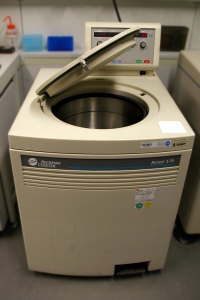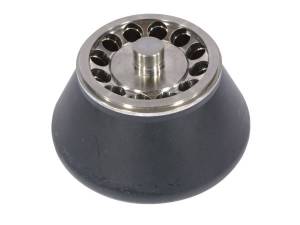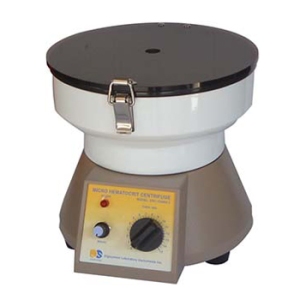A microcentrifuge is one of the most common devices found in a laboratory. It is driven by a motor that spins the liquid samples at a very high speed. Thus there are many different kinds of microcentrifuges depending upon the size and capacity of the sample. It utilizes the principle of sedimentation where centripetal acceleration is used to separate substances of various different densities.
Just like any other ordinary device the microcentrifuge also demands maintenance. It is in fact necessary to carry out periodic maintenance for the microcentrifuge safety purpose. Thus it is necessary to maintain and clean the microcentrifuge so that it always operates properly. With a microcentrifuge only a few small steps are required to perform the maintenance.
Carrying out Maintenance:
-
Any extra material like plastic or broken glass (due to wear and tear of a test tube) needs to be carefully and disposed off.
-
It is also necessary to test the speeds; where the measured and rated speeds should not differ more than five percent under specific conditions. In addition to which the speeds of the microcentrifuge needs to be periodically checked using a reliable photoelectric tachometer using the guidelines of the necessary standards that are present.
-
As per the guidelines of repairing and maintaining a microcentrifuge. The microcentrifuge bowls should be cleaned with an antibacterial solution. Additionally the rotor heads and buckets need to be cleaned as well.
Sticking to the guidelines:
-
The accuracy of the microcentrifuge timer needs to be checked and verified regularly as per the given guidelines laid out.
-
The measured and programmed temperature should be within two degrees Celsius. In case of refrigerated the microcentrifuge should be checked at least once a month in standard conditions; this is pretty much necessary to avoid future repairs of any kind.
-
As a general guideline microcentrifuges with seven hundred to fourteen hundred hours of running require minor repairs as part of the maintenance. In case of the microcentrifuge having run three thousand to four thousand hours.
-
it will require an overhaul with repairs to any damaged parts like drums, corroded shafts, rim fractures, loose shells.
-
In addition to which the bearing components need maintenance and tighten all the bolts. It would be a good idea to replace the screen, brake band, replace the rubber shock absorbers and check the bearings.
Most microcentrifuges will be accompanied along with an instruction booklet. The lubrication, maintenance and replacement of brushes should be carried out as per this instruction booklet. If this periodic maintenance like replacement of worn brushes is not carried out it there is the potential of the motor to fail which would require complete replacement.
Safety:
When it comes to using a microcentrifuge device it is of utmost importance that you consider the safety issues surrounding the operation of the device. The microcentrifuge may seem like a harmless device, but it comes with its own set of risks and issues. Thus it should only be operated by trained and official staff at all time. And even though the operator is well trained he should make it a point to read the manual prior to operating the device. There are few main points mentioned below for you to get a better idea of the risks involved while dealing with a micro-centrifuge.
Balanced Load: It is of utmost importance that you balance the load while analysing a sample in the microcentrifuge device. The balancing of the load is achieved by placing a tube of equivalent volume in the opposite grove to your sample. The balancing should be as close as possible if not perfect since any small difference can result in a large force imbalance at high speeds resulting in damage to the equipment and personal injury as well.
Locking Mechanism: The microcentrifuges usually have a locking mechanism that shuts down the microcentrifuge in case it is opened. Thus prior to using the device a complete check of the rotor and the lid locking mechanism should be carried out.
Hazardous Substances: It often happens that you need to run an analysis on hazardous substances as well. Everything is fine if things run smoothly, but in case of an accident the microcentrifuge loaded with hazardous substances prove to be a big hazard to the operator and possibly the entire laboratory. Thus it is usually in best interest of the operator to wear protective glasses while operating the microcentrifuge device.
Wobbly surface: It is imperative that you check the surface on which you wish to operate the microcentrifuge as well. If he microcentrifuge starts to wobble or the surface is not steady it is best to immediately pull the plug.
Get more information about Microcentrifuges visit – www.neuation.com or email us on –info@neuation.com or call on – +91 2764-248241.
About Author:- Johanna Williams

Hi friends, I am interested in writing about science, technology & Web related stuff. Follow me on Twitter, on Google +Johanna,and/or become a friend on StumbleUpon.


 image courtesy : hofstragroup.com
image courtesy : hofstragroup.com
 image courtesy : digisystemlab.com
image courtesy : digisystemlab.com
You must be logged in to post a comment.